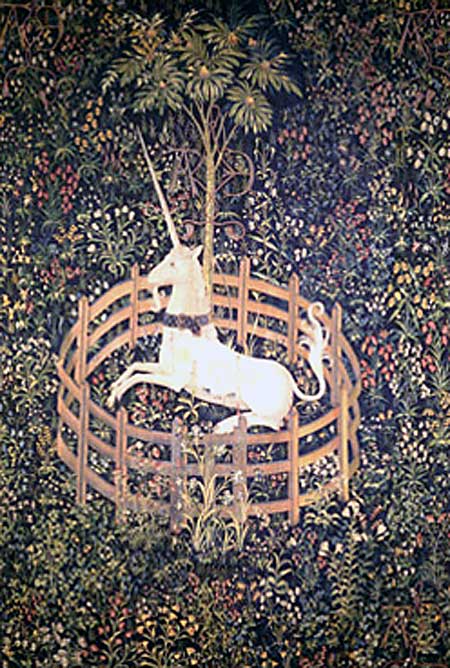 |
| The hunt of the Equus Ferus Cornicae |
"The unicorn or Equus Ferus Cornicae is a magical horse breed from many legends such as the several hunts of the unicorn (see tapestry image).-The Otherworld Tales private wiki
Related to the common horse breeds, a unicorn is slightly larger than the horse, has split hooves and a spiralling horn like a Narwhal on its head. It is extremely fast, strong and untameable except by virgin maidens and people of pure intentions.
By grinding the horn, alicorn is won, a powder which can cure most poisons and can also detect them. Alchemists will pay a great price for alicorn as it's a powerful magical component.
Because it is so difficult to trap and tame a unicorn, they are often seen as prized steeds. One who rides a unicorn must be great indeed."
(when quoting please make reference to this blog)
Every creature in my wiki has a Latin name that either fits perfectly or would seemingly fit in the lists of Linnaeus. I also spend adequate time on the differences that make it a different species compared to others (in this case, the common horse) and I offer a surplus of scientific information that is considered part of the original legend (alicorn and virgin maidens). Sometimes I add "fictional" scientific information to this that isn't part of the lore and of course sometimes a plant or animal is entirely fictional, so there's no lore to go on.
Geen opmerkingen:
Een reactie posten